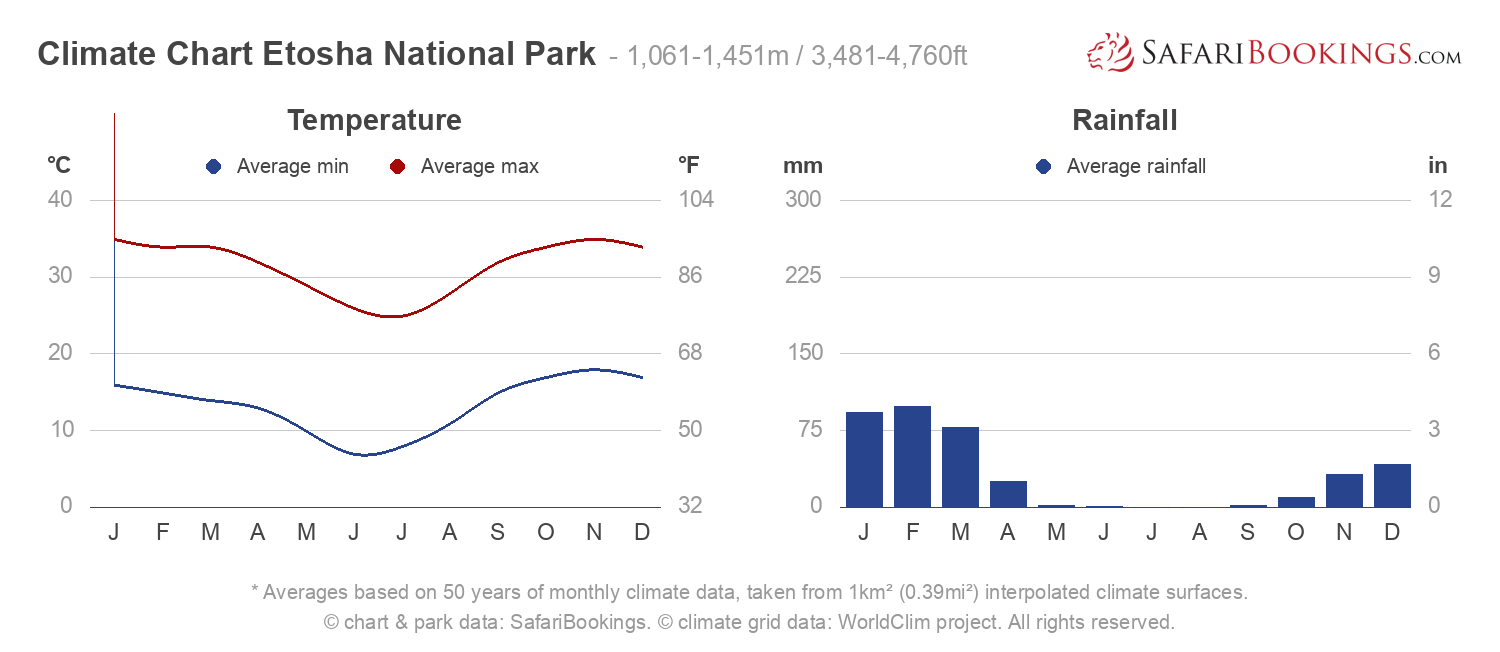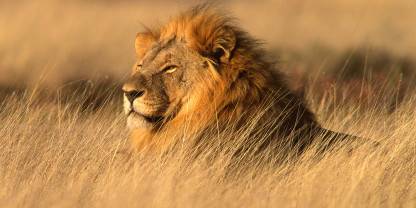
Climate Chart Etosha National Park – 1,061-1,451m / 3,481-4,760ft
Etosha National Park is hot and relatively dry. Like most semi-desert climates, there is a large variation in temperature between night and day. Rain usually falls in the form of heavy thunderstorms. There is a Wet season (November to April), which coincides with the summer months. The heaviest rains fall from January to March. Rainfall is a rarity during the winter months, which make up the Dry season (May to October).
Dry Season May to October – Winter
Rainfall is almost completely unheard of during the coolest months of the year. Conditions become drier as the winter season progresses. There are fewer water sources for wildlife, and vegetation thins out.
- May, June, July & August – It’s dry and sunny at this time of year. Afternoon temperatures are pleasant, with an average high of 27°C/80°F. Cold morning temperatures of 9°C/48°F mean you’ll need to come prepared with warm clothing. This is the coolest time of year.
- September & October – Temperatures rise rapidly during the day to an average of 33°C/91°F. Morning temperatures are normally warmer too, at around 16°C/61°F. Rains usually begin in late October or early November.
Wet Season November to April – Summer
The Wet season coincides with the summer months, yet rainfall is low and usually occurs in the afternoon. Days are typically hot. The cold mornings of the winter months are gone and temperatures around 16°C/61°F at night are common.
- November & December – The rains usually start in November with the occasional thundershower. When the first rain falls, it comes as a relief after a long dry winter. These are the hottest months (along with January) and afternoon temperatures sit around 35°C/95°F.
- January, February & March – Although it remains mostly sunny, these are the wettest months, with frequent afternoon showers. Afternoons average 34°C/93°F.
- April – April sees a dramatic decrease in rain. The temperature hovers around 32°C/90°F during the day as the Wet season comes to a close.

